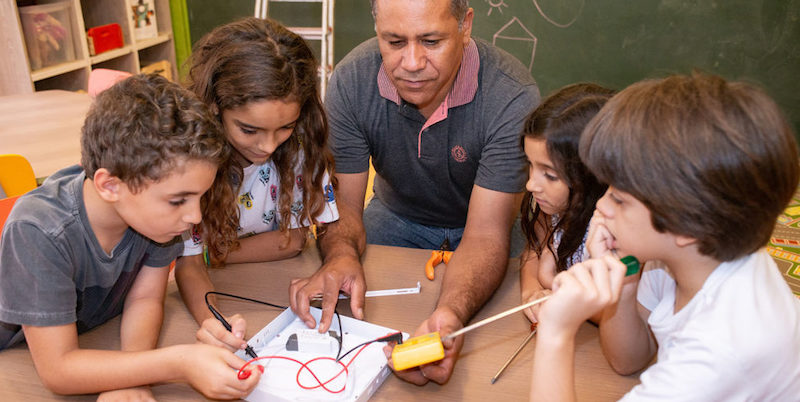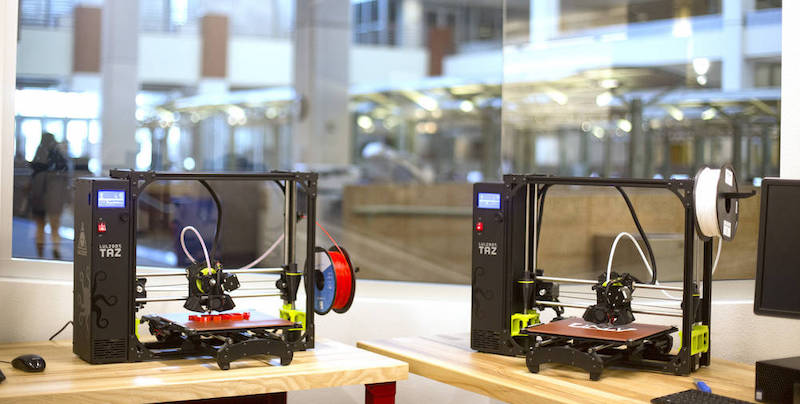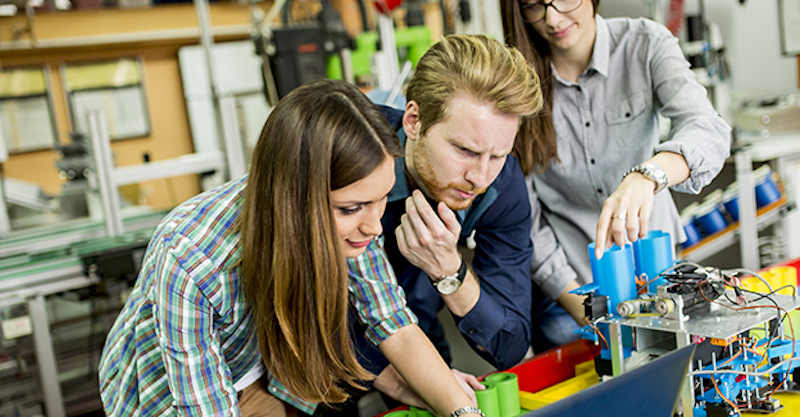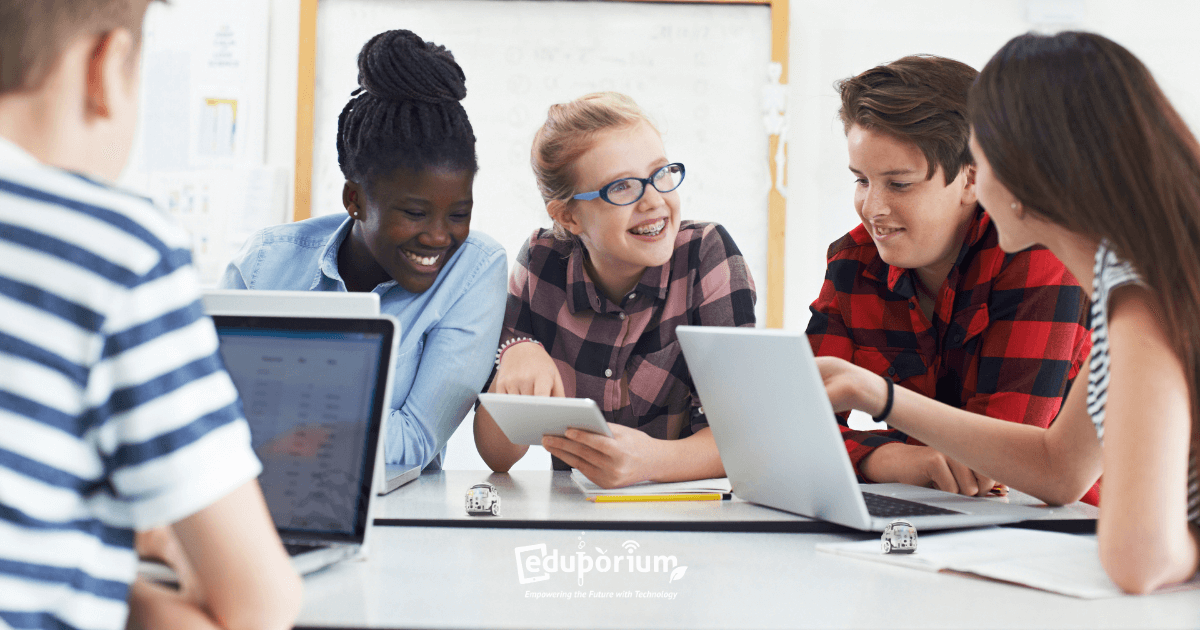There are millions of educators and parents wondering if 2020 (and 2021) were total losses when it comes to learning. Because of all the negative thoughts and experiences we've come to associate with pandemic-era remote learning, our natural reaction is probably to let the struggles consume us. In an effort to look on the bright side, however, we've joined the optimistic crowd a bit in questioning whether this unprecedented (everyone's favorite word) period provided educators, administrators, and learning designers with valuable lessons on educational trends and regularities. And, what we've seen is that we previously took many of them for granted, including when it comes to MakerEd.
The pandemic brought into focus some fundamental issues plaguing innovation in education, including, most notably, teacher and student mental health. Its effects also raised legitimate concerns about cultural diversity, inclusion, equity, and equality among the vast variety of students around the country. As for hands-on learning experiences, we quickly discovered that the power of touch, the importance of social connections, and the value of student engagement and ownership have always been monumentally important. Technology, which was front and center in a year of COVID-induced virtual learning, is actually a transformative tool. It can truly help education leaders at least partially address many of these newfound issues.

Purposefully using technology following the pandemic.
Obviously, everyone quickly discovered that technology was an absolute necessity for students to continue learning. That wasn't a huge surprise and, as time has passed, we're more interested in how teachers and students can build on their remote learning experiences. It's time to capitalize on what they learned about their intellectual and social states and try to move forward. To do that, we've thought about how EdTech tools can help foster learning cultures that truly motivate and inspire students. And, admittedly, there's no cut-and-dry solution to this. Besides computers and tablets, one option that seems to hold a lot of potential lies in a renewed focus on integrating creativity-boosting, innovation-driving MakerEd tools in conjunction with the promotion of developing a MakerEd mindset.
This whole experience of teaching and learning throughout a pandemic validates the value of MakerEd and EdTech tools in education. What we’ve noticed, in many cases, is that it’s also helped increased teacher readiness, willingness, and comfortability when it comes to incorporating these types of tools in instruction. Besides helping teachers address these core issues, maker-focused instruction can also help them turn learning into adventure.
Defining Effective MakerEd Experiences.
Why do we think that turning learning into adventure is a good way to approach a return to normalcy? Let’s start by looking at the term 'adventure' and how it's defined: engagement in an unusual and exciting experience or activity, especially the exploration of unknown territory. According to this definition, the unknown could serve as a good way to define learning. At first, students have very little knowledge about a topic but, through targeted learning experiences, they can progress. They move from a state of unknown to clarity and mastery—if they have the right tools and instructional guidance. Like everyone else, they can gain that understanding through exploration and discovery.
In fact, this is one of the best ways to describe the process of learning through experiences. This definition includes a hint of action and motion with a splash of generating student interest and excitement. The definition of adventure describes an engaging and positive experience of active learning. So, it’s not surprising that the term “learning adventure” is expanding in popularity among educators. This is especially true in a time with requirements and challenges to make instruction more intelligent and engaging, leading to students gaining more relevant knowledge and skills for today’s world.

New Problems for Education.
Compared to skills students in previous generations benefitted from developing, the skills needed to succeed in the innovation economy have evolved a great deal. Creating competitive academic environments in which students feel empowered to acquire these skills is among one of the newest and most pressing problems in education. So, how can we keep up with the speed of change? One strategy is providing students with consistent opportunities to benefit from these MakerEd tools. What specific tools are we talking about, though? They don’t have a particular name, but they’re commonly known throughout the education world as STEM, STEAM, or MakerEd technologies.
These are the educational products that our team is actually vetting for teachers. We’re conducting the research, getting them in our hands, and ensuring that they align with 21st century classroom goals. In our minds, they represent a concentrated opportunity for students of all ages to experience creativity in material form. They also represent a connection to what’s driving the current innovation economy. The meaningful use of these technologies in today’s educational environments can unlock new potential. Beyond that, it also resonates with releasing the internal (and sometimes suppressed) creativity within teachers and students.
Infusing MakerEd Tools in Learning.
Usually, there’s the assumption that educational technology products can only be useful for learning about technology, specifically in coding, design, 3D printing, manufacturing, and so on. We've seen first hand, however, that this is not the only way to integrate technology into meaningful learning experiences. We routinely advocate for using tech tools in hands-on activities in every core subject, like building a diorama to illustrate the plot of a story, for example. In these cases, students are still acquiring knowledge, but with added benefits and the chance to learn new skills. Educators can also use MakerEd tools to enhance the quality of learning, opportunities for collaboration, the freedom for students to create, opportunities for them to take ownership, and the ability to explore content in new ways.
MakerEd: Experiential, Engaging, and Exciting.
Despite a renewed focus on deeper learning experiences for students post-pandemic, hands-on activities have been a part of learning forever. A product of the Maker Movement, however, many of these hands-on activities have taken a maker-inspired form. Maker education is very closely associated with STEM education. This unique approach enables educators to facilitate effective problem-based and project-based learning that requires students to use their hands, collaborate, and apply their knowledge in a methodical way to solve authentic problems. MakerEd also accommodates students with a variety of interests and abilities. It even helps them re-establish some of the passions they may have had before learning shifted online. We've seen countless positive outcomes from MakerEd initiatives on both the student side and the teacher side and believe the same strategies can be applied in returning to school buildings.
Let's put this in perspective with a couple of examples. Think of a straight-A student realizing that academic pressures commonly felt in traditional learning environments have been lifted and replaced with the opportunity for exploration in MakerEd. Students in these situations may respond well, discover some new motivation, and learn how to activate their creativity. They may also learn new things about themselves through productive failures in a safe space. This includes developing new sets of valuable soft skills or even potentially discovering new passions. Furthermore, shy students could start to excel and build new relationships with their classmates. And, girls could overcome their beliefs that STEM is not for them, or any other number of things. All of these, of course, are powerful examples of the effects maker learning can have on academic and social-emotional success.

A MakerEd Mindset Everywhere.
But, we also have to keep in mind that, while often powerful, technology tools are only tools after all. They can help drive or reinvigorate learning experiences, but they're not the only elements that lead to ultimate success. In our minds, the most important ingredient in designing learning adventures is the MakerEd mindset. It starts with teachers promoting and students embracing it. If you recognize it and strive to spread it, it takes only simple adjustments to truly incorporate it into learning. From there, discovering new tools, solutions, and effective implementation methods can help students achieve ideal outcomes through maker-inspired exploration.
Over the last year, we worked with different partners to develop a 1:1 STEAM solution specifically for enhancing post-pandemic MakerEd. Known as our ‘Learning: Everywhere’ Kit, educators can leverage this portable solution in a classroom or if they end up reverting back to remote or hybrid learning. It's easily transportable and includes both non-tech tools and proven robotics and coding resources. They're each supported by an in-depth learning platform as well, on which educators can develop, accumulate, and share multi-modal lessons and activities. The kit supports educators in teaching core subjects while also allowing them to help students develop specific STEAM skills. It has even been piloted and tested by educators in several states.
The Eduporium team is ready to help educators build fluencies with new tech tools. If you're looking to launch a project like this or have any questions about how to connect returning to the classroom, SEL, MakerEd, and technology, please feel free to reach out to our team. We wish everybody well as the new school year begins and hope you can safely experience it in the classroom. Follow us on Twitter and Instagram for more.



